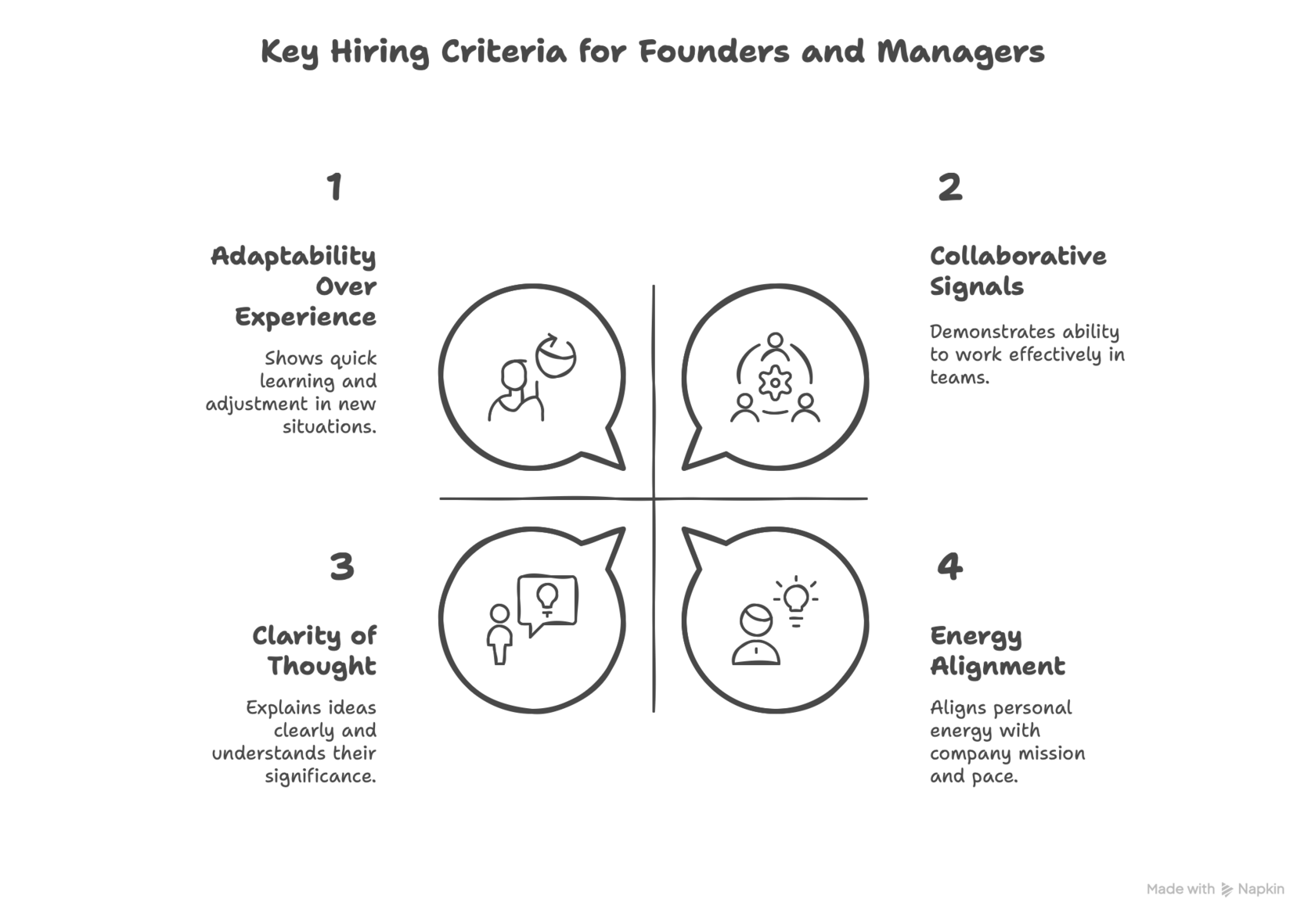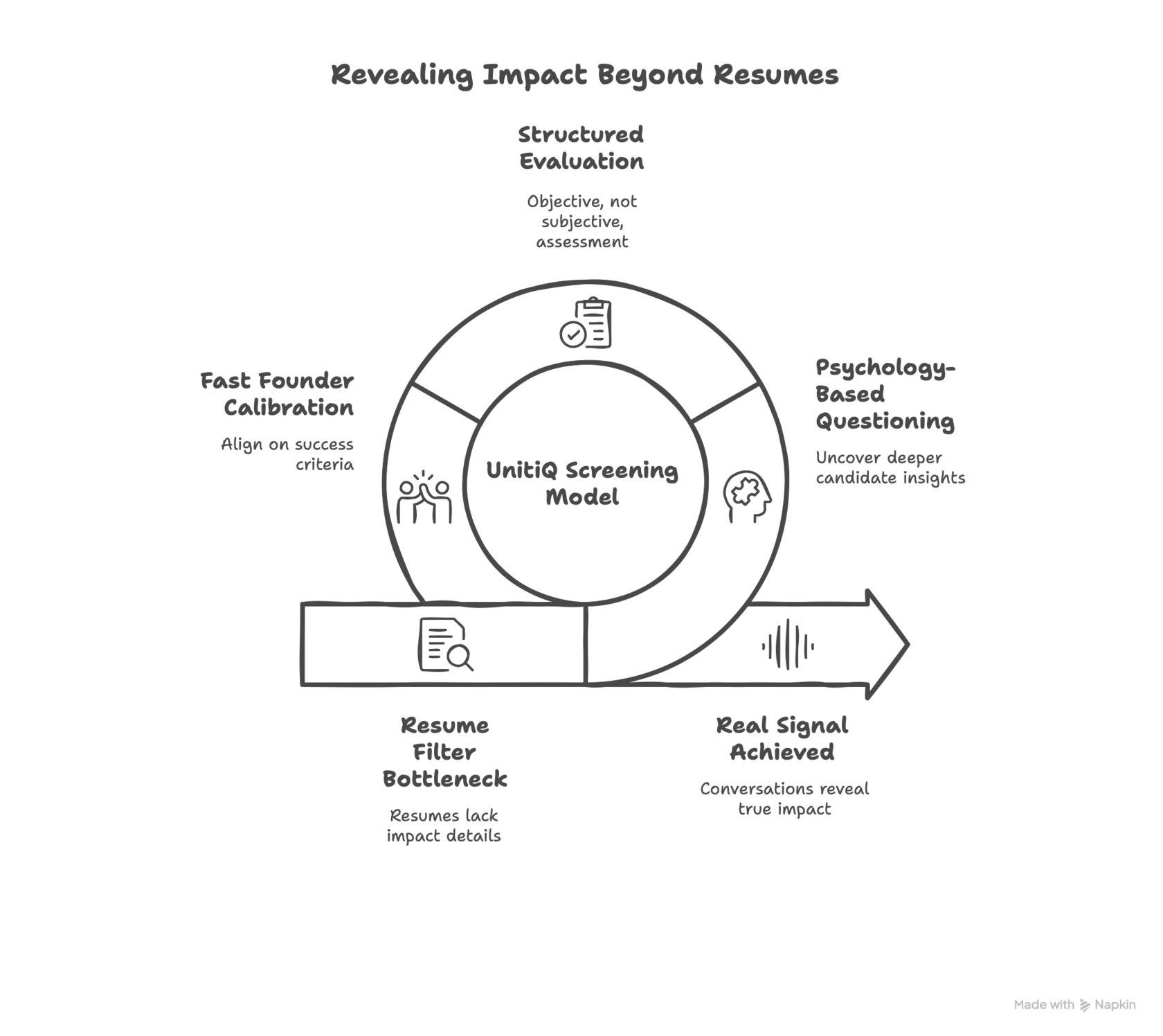📄 Hiring in a Post-Resume World: What Founders Should Really Be Screening For
Resumes don’t hire. People do. And in 2025, that’s more obvious than ever.
🧭 The Resume is Broken — But You Already Knew That
Founders aren’t hiring from stacks of printed CVs anymore — but many are still screening like they are.
Here’s the problem:
The resume is a static snapshot of someone else’s narrative.
And today, narratives are easier than ever to generate, tweak, or fake.
From ChatGPT-written career summaries to inflated titles on LinkedIn, even smart founders can get fooled.
So what do you screen for when:
- Everyone “looks good on paper”?
- Past roles don’t reflect future capability?
- Experience doesn’t equal impact?
You reframe the screen.
🚫 What You Shouldn’t Rely On
Here’s what no longer works on its own:

- Titles: Job titles vary wildly across companies (and inflation is real).
- Years of experience: Time served ≠ value added.
- Companies listed: Logos don’t guarantee learning or leadership.
- Bullet-point bingo: Listing tools or buzzwords doesn’t show depth.
- “We’ll know it when we see it.” ← This costs weeks and adds bias.
✅ What to Screen For Instead
Here’s what we recommend founders and hiring managers actually screen for:

1. Clarity of Thought
Can they explain what they did and why it mattered — without hiding behind jargon?
✔ Use questions like:
“Tell me about a time you disagreed with the team — what did you do?”
“How did you decide what to prioritize in your last role?”
This tests both decision quality and self-awareness.
For a deeper dive into assessing these qualities, explore our article on assessing motivation, decision-making, and problem-solving skills.
2. Adaptability Over Experience
Past experience is a weak predictor of success in new contexts.
What matters more:
- How they handle ambiguity
- Whether they ask the right questions
- Their ability to learn fast and adjust
✔ Use prompts like:
“If you joined us tomorrow, what would you want to learn in week one?”
“What would you do if your assumptions were wrong halfway through a project?”
To understand how to identify such high-potential individuals, refer to our insights on building high-performance teams.
3. Energy Alignment
Don’t just look for “interest in your company” — look for alignment with your mission pace and pressure.
✔ Signal to test:
- Are they naturally curious?
- Do they ask smart, company-specific questions?
- Do they show a desire to contribute, not just consume?
For strategies on assessing cultural fit, see our guide on how to assess cultural fit during an interview.
4. Real Outcomes
Not "led a team of 12," but:
“What did that team actually achieve — and what part of that was you?”
✔ Ask:
- “What are you most proud of from your last 12 months of work?”
- “What result didn’t go to plan, and how did you handle it?”
Look for accountability, not showmanship.
For more on structured evaluation methods, read our article on the science of talent acquisition.
5. Collaborative Signals
AI can fake answers.
It can’t fake curiosity, nuance, or relational thinking.
✔ Look for:
- Language of collaboration (“we,” “together,” “I helped unlock…”)
- Willingness to talk through trade-offs
- Comfort with disagreement
To understand the importance of emotional intelligence in hiring, explore our piece on hiring the whole person.
🧠 What We Do at UnitiQ
At UnitiQ, we help our clients move past resume filters — and into real signal.

Our screening model is built on:
- Psychology-based questioning
- Structured evaluation (not vibes)
- Fast calibration with founders to ensure we’re aligned on success
Because resumes don’t reveal impact.
Conversations do.
💬 Final Thought
If you're still screening based on the perfect resume…
You’re setting yourself up for perfectly average hires.
Start screening for:
- How people think
- How they learn
- How they own outcomes
Because in a post-resume world, the best candidates won’t just show up in your inbox — they'll stand out through their thinking.
👉 Interesting? Let’s talk
